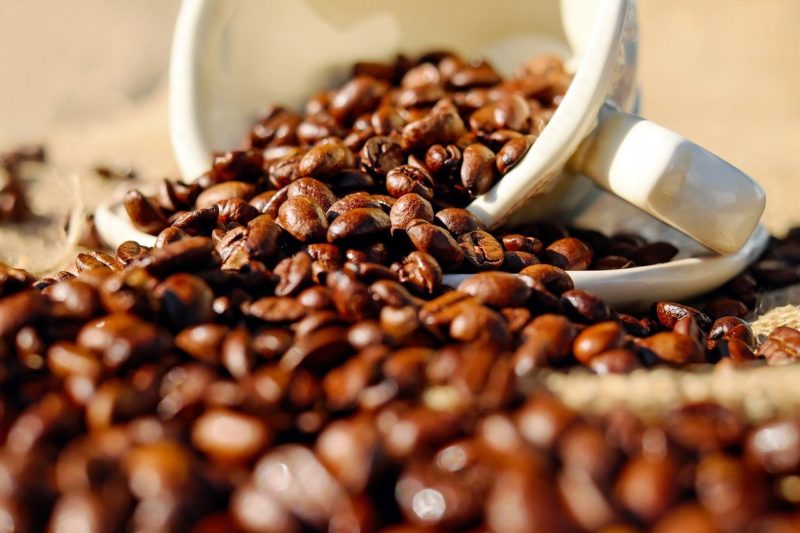A great cup of coffee starts with the coffee beans from the best coffee brands in the world. We can all agree that there’s a fair bit of subjectivity involved in declaring something the best. A nice cuppa is always satisfying, but there’s always room for favorites.
There are practically countless options to pick for your cup of joe. The blends, varieties, origins, roast, and several other factors play a role. But the biggest factor is how a sip of coffee feels. A remarkable taste and mouthfeel that we can love is the mark of good coffee.
Often, getting a coffee subscription is a great way to ensure a steady supply of great coffee. But sometimes, we want more control and more choices in our quest for the best tasting coffee. And that’s why it makes sense to look into more options.
There is a joy and taste profile to grinding freshly roasted coffee right before we brew it. They don’t have to be gourmet coffee beans either. A fresh and good roast is half the battle won.
Saddle up and let’s go exploring!
Editor’s Choice: Lifeboost Coffee
Lifeboost Coffee is our editor’s choice for the best coffee beans to buy. Coffee beans used by Lifeboost are cultivated carefully and it shows in the flavor. The company says their beans rank amongst the top 3% coffee beans grown globally.
What makes these beans so special?
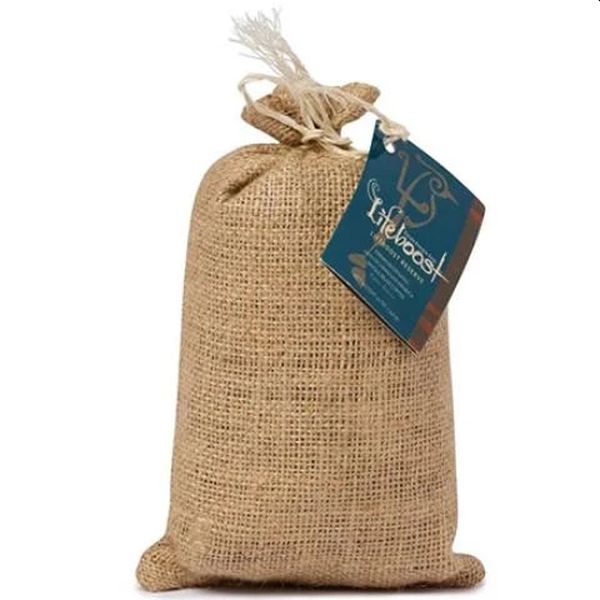
These are high-grown beans, where the altitude allows for flavor profiles to take their time to mature. High elevation coffee beans take some time getting ripe, but they use this time constructively. This usually results in vibrant flavors that we desire so much.
Another aspect of these beans is that they are shade-grown. Only a small portion of global coffee production is truly shade-grown. With the care that these plants receive, they produce tremendous results.
Lifeboost shows the same attention to detail in packaging and selling beans as well. When they say single-origin, they mean it in a narrow definition of the word. The coffee beans in each bag have their origin in the same coffee tree/plant.
Yup, not the country, not the farm – the plant! Now that’s the way single origin ought to be and it shows in the consistent flavor and taste of the coffee. The coffee is pesticide-free, non-GMO, and they use a neutral third-party lab to check that the beans don’t have mycotoxins.
The roast lives up to expectations for beans that are so carefully managed. It’s masterfully done, with an assurance that you’ll get freshly roasted coffee beans delivered for your order. With all that going for it, no wonder these beans take a special place in our selection for the best coffee beans.
Highlights:
- Shade-grown coffee beans
- Lifeboost beans are amongst the top 3% of global production
- Flavorful high-grown beans
- Non-GMO
- USDA certified organic
Read more and see buying options
Best Coffee Brands In The World Ranking — Our Picks And Reviews
- Koa Coffee Peaberry Medium Roast
- Hawaiian Coffee Company Toasted Coconut Coffee
- Kicking Horse Coffee, 454 Horse Power
- Koffee Kult Whole Bean Coffee
- Volcanica Coffee Kenya AA Coffee Beans
- Death Wish Coffee Whole Bean Coffee
- Stone Street Coffee Cold Brew Reserve Colombian Supremo
- Kicking Horse Coffee, Decaf
- Don Pablo Signature Blend – Medium-Dark Roast
2. Koa Coffee Peaberry Medium Roast
Kona coffee is amongst the rarest in the world. Rarity itself isn’t that big a deal, but thankfully, Kona coffee is also remarkably delicious.
Grown only in the Kona District of the Big Island in Hawaii, this coffee has a small area for cultivation. This leads to a limited produce, which is the chief contributor to the rarity of Kona coffee.
Conventionally, 100% Kona Coffee means the coffee contents are entirely Kona coffee beans. At a glance, this might seem obvious, but you’ll be surprised at the number of sellers trying to pass random coffees as Kona. That’s why it’s important to read the fine print when you buy Kona coffee.
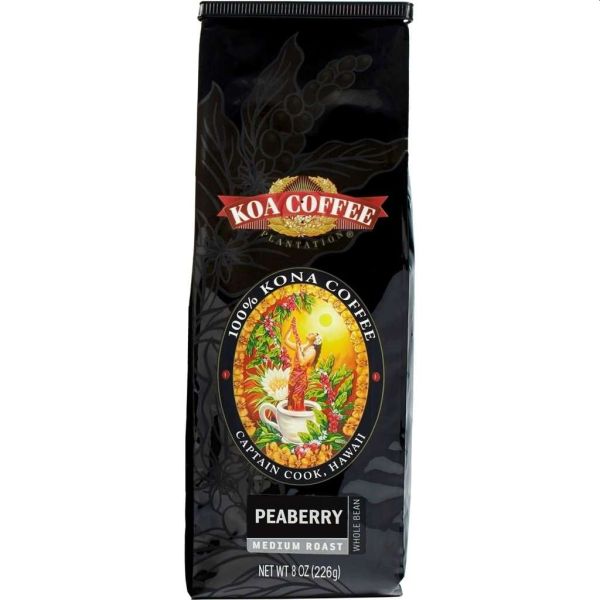
Taking out this guesswork and delivering quality makes Koa Coffee Peaberry Medium Roast all the more special. And they do it one better by picking only the best of beans for their coffee.
In the world of Kona coffee, Peaberry is often called the “Champagne of Kona”. In a way, these beans are the best of the best. They have the same sweet and deep flavor of Kona, though accentuated thanks to the use of Peaberry.
Koa Coffee has masterfully executed this medium roast of Kona Coffee. Its taste is excellent and the aroma could very well have you floating towards the cup, like in those classic cartoons.
Wonderfully rare as it is, Kona coffee is expensive. And Peaberry takes the pricing a notch higher. Yet, this expensive coffee is worth every cent you spend!
Highlights:
- 100% Kona Coffee
- Made from Peaberry coffee beans
- Medium roast
- Expensive
- Smooth and mellow with excellent mouthfeel and aftertaste
See buying options and pricing
3. Hawaiian Coffee Company Toasted Coconut Coffee
Flavored coffee joining the ranks of the best whole bean coffees is unusual. But then we’re not (overly) purist and believe that Hawaiian Coffee Company Toasted Coconut Coffee has earned its spot. The lightly roasted coffee beans mingle with the coconut flavor wonderfully.
Lion Coffee’s Toasted Coconut is one of its best-received flavors. Satisfying aroma of the Hawaiian coffee beans carries the hints of coconut. Their union is as pronounced in the taste as well.
Well, I guess Hawaiian coffee ought to go well with coconuts!
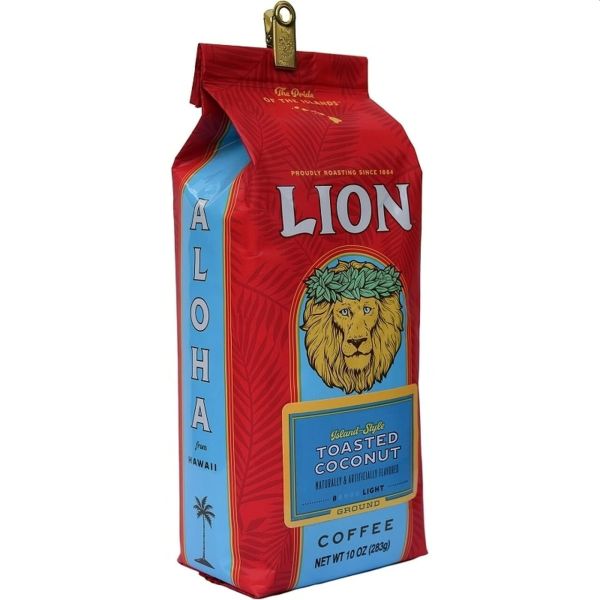
The light roast brings out the vibrant flavors in the coffee. Its coconut flavor highlights the taste, while also mellowing the coffee. The brew gets a light body and an excellent mouthfeel.
A persistent complaint with flavors is that they show up in the aroma but remain MIA in taste. The way these flavors blend is practically seamless. You could very well think that the coconut is a part of the coffee beans themselves, rather than an added flavor.
It is the taste and flavor that seals this coffee’s place on our list. By themselves, these beans could be amongst the best light roast coffee offerings available. With the coconut flavor in place, these are pretty much the best flavored coffee beans in the world.
Highlights:
- Flavored coffee
- Light roast coffee beans with coconut flavor
- Hawaiian coffee
- Excellent value for money
4. Kicking Horse Coffee, 454 Horse Power
Got your heart set on something strong? Is 454 horsepower good enough for you? I’d say that’s a pretty good number to get things rolling. I’m just spitballing here, but it’s fair to assume Kicking Horse Coffee named this blend 454 Horse Power to highlight how strong the brew is.
This isn’t some uber-caffeinated brew designed to jolt your brain into reality. Well, it does have a noteworthy kick, but it’s the flavor that holds the strength. A sumptuous dark roast, this blend gets its beans from Central & South America, and Indonesia.
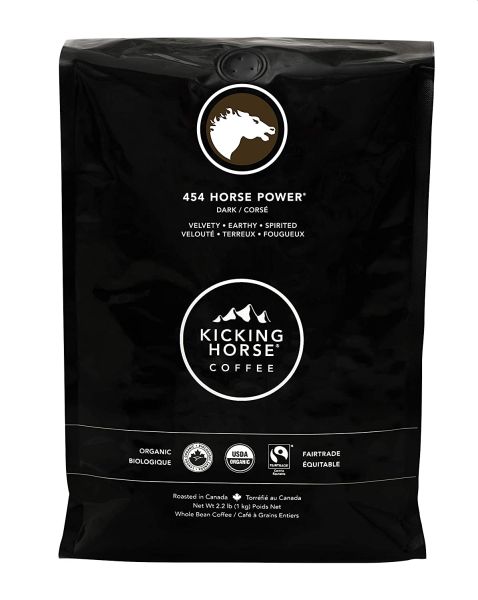
Kicking Horse Coffee 454 Horse Power blend is the natural choice when you want something strong, yet smooth. In its material and descriptions, the company repeatedly reminds us that this blend brews a smooth cup. Metaphors of a “smooth riding dark horse” drive the point home.
Their enthusiasm for the blend is understandable. These beans make an impressively smooth brew that revels in the glory of its taste notes and aroma. Peat and hints of nutmeg highlight the distinctive aroma. For taste notes, you get earthy notes and a black licorice finish.
Suited for practically all brewing methods, this blend of arabica coffee beans is a lovely pick for your morning coffee. Or for that matter, afternoon coffee, evening coffee, and all the other times we beeline for the coffee maker.
Kicking Horse recommends French press, drip machine, pour over, and cold brew methods for the 454 Horse Power. It does decent with espresso too, so we’ve got all our bases covered!
Highlights:
- Blend of coffee beans from Indonesia, Central & South America
- Dark roast
- Certified Organic, Fair Trade, and Kosher
- Smooth brew with a heavy body
5. Koffee Kult Whole Bean Coffee
Koffee Kult Whole Bean Coffee makes a smooth and strong cuppa. Sumatra, Guatemala, and Colombia supply beans for this artisanal blend
Going strong is the highlight of this coffee. Ranked amongst the best dark roast coffee beans, its full, heavy body makes a strong impression to cement its flavor. Yet the coffee masterfully avoids going to the bitter side, thus ensuring a quality we can all love.
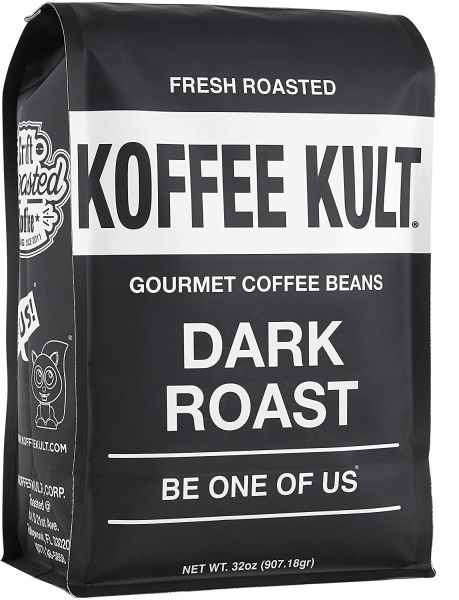
Dark roasted to perfection, these beans also manage to steer clear of acquiring an oil film. That means they’ll go through your favored coffee grinder with ease. You won’t have to worry about oily beans clogging up the grinder.
The roast and the rich, strong flavor give these beans a place amongst the best coffee beans. They’re also phenomenal as one of the best espresso beans. The heavy body and flavor become assets to these beans when used for espresso.
Though its true skill lies in espresso, Koffee Kult Whole Bean Coffee is good with pour over coffee makers, drip coffee, and the trusty French press. The coffee has a bright and long finish with notes of cinnamon and cocoa in flavor and aroma.
Highlights:
- Dark roast arabica beans
- Blend of coffee beans from Guatemala, Colombia, and Sumatra
- The beans have no oil on the surface
- Heavy body with a great aroma and taste
See buying options and discounts
6. Volcanica Coffee Kenya AA Coffee Beans
Volcanica Coffee Kenya AA Coffee Beans packages the best of Kenya’s coffee beans. Designations vary by country, though for Kenya, AA represents the best of beans available. Rich flavors, a vibrant acidity, and a fragrant aroma are the hallmarks of these coffee beans.
The syrupy richness and deep flavor notes contribute to these coffee beans being the best coffee to drink black. Kenyan AA beans are large and chock-full of flavors and aroma. The medium roast is well executed and highlights the flavonoids in these beans.
And that really is something to flaunt.
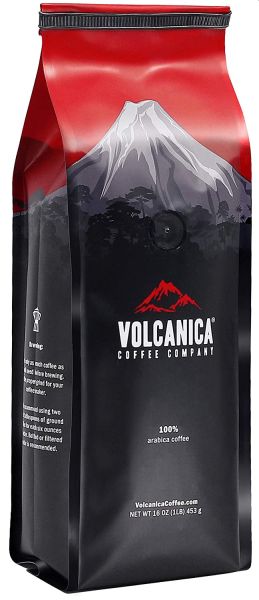
Kenya coffee often takes a spot in the company of the best coffee beans in the world. Volcanica Coffee Kenya AA Coffee Beans give us a glimpse at these characteristics. The brew is syrupy with a winy aftertaste to marvel at. Tones of berries and citrus blend well with the fragrant aroma.
Volcanica says they’re committed to their duties as small batch roasters. The beans are freshly roasted shortly before shipping them to customers. In fact, the company says they won’t roast beans unless they have an order at hand.
Highlights:
- Medium roast
- Arabica beans
- Excellent taste notes and aroma
- Rich body
See pricing and buying options
7. Death Wish Coffee Whole Bean Coffee
Popularly known as the strongest coffee, Death Wish has remarkable brand recognition. Death Wish has an impressive blend that is rich in caffeine and smooth in flavor.
Death Wish employs a blend of arabica and robusta beans. Both varieties are added in perfect proportions to give Death Wish its famed caffeine content. Caffeine clearly is the top priority here, but they didn’t forget about taste either!
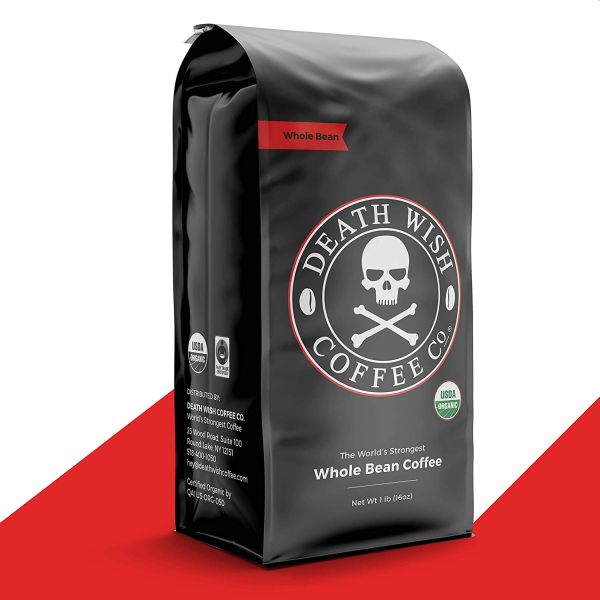
The use of robusta beans and the overall dark roast can push the brew to a bitter taste. And that’s where the skill of blending and roasting counts. A sip will tell you that Death Wish coffee is strong and flavorful. But it is not one to give in to the bitter side!
The company tagline is “double the caffeine”. While it’s difficult to objectively state the caffeine content, or even if it’s double, there are some numbers to support the claim. You can expect 728 mg caffeine from 12 fl oz of Death Wish coffee. That number’s way above the FDA’s recommended maximum caffeine intake of 400mg.
So yeah, there’s every reason to enjoy Death Wish when it comes to flavor and brew strength. And while the discussion of its caffeine content overshadows any conversation about this coffee, the quality of the blend is as remarkable.
Cherry and chocolate form the taste undertones to the otherwise strong coffee flavor. The company uses premium beans that are certified fair trade and organic.
Highlights:
- Dark roast
- Blend of arabica and robusta beans
- Certified USDA organic and fair trade
- Highly caffeinated – amongst the most caffeine-rich coffee beans
8. Stone Street Coffee Cold Brew Reserve Colombian Supremo
Stone Street Coffee Cold Brew Reserve Colombian Supremo is an impressive package of quality coffee beans. Though they’re marketed explicitly as cold brew coffee beans, they’ll work fantastically for other coffee brewing needs as well.
The secret to this versatility is the use of high-quality beans.
Colombian Supremo coffee beans rank high amongst the best coffee beans. Supremo beans are large and packed with vibrant flavors. The dark roast adds a bold taste to your brew. This is especially evident when you make cold brew coffee.
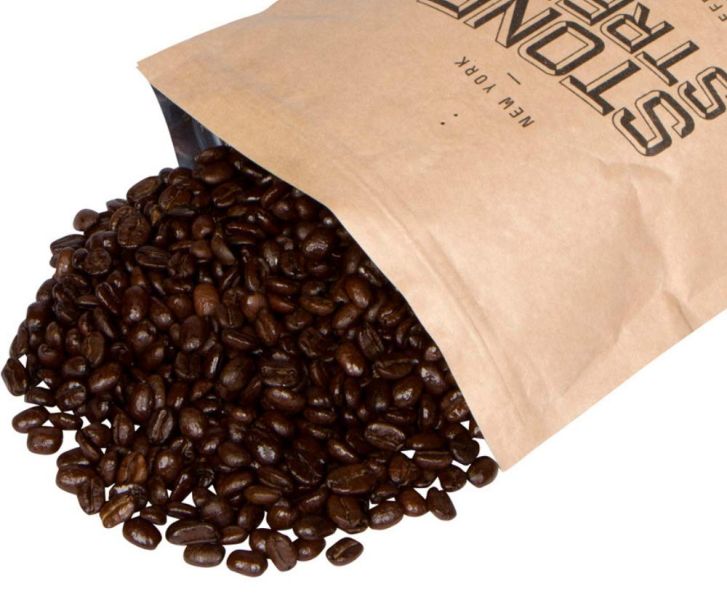
The boldness and taste shine through and make you congratulate yourself on your choice of beans.
Stone Street is a small batch roaster. They claim to have an “ethical & intimate relationship” with the farms where they source their coffee. I assume such a relationship would be rewarding for the roasters, the farmers, and the consumers. And looking at the taste profile, it does seem to have worked out!
The beans are reasonably priced and available in packaging of 1 lb, 2 lbs, and 5 lbs. The 1 lb bag is resealable, but make sure you have suitable coffee containers when you open the other bags. Truth be told, it’s better to use a coffee container rather than rely on a resealable bag, even if it’s a good bag.
Highlights:
- Colombian Supremo arabica coffee beans
- Dark roast
- Made especially for cold brew
- Great value for money
9. Kicking Horse Coffee, Decaf
Kicking Horse Coffee Decaf made our list for the best decaf coffee. This dark roast, whole bean coffee has come out of the decaf process exceptionally well. Going decaf hasn’t made its taste suffer. The blend maintains nearly the same quality as “regular” coffee.
One reason for this is the use of Swiss Water Decaf process, which is gentler. Moreover, the process is tuned towards getting caffeine out without affecting the flavor. While it isn’t possible for the taste to remain unaffected when removing caffeine, it is possible to minimize the effects.
Minimize them to a point where they are negligible.
Our wonderful decaf in dark roast does exactly that. You’d be hard-pressed to differentiate between this decaf and regular coffee in a blind taste test. This blend from Kicking Horse is sourced from the best beans of Central and South America.
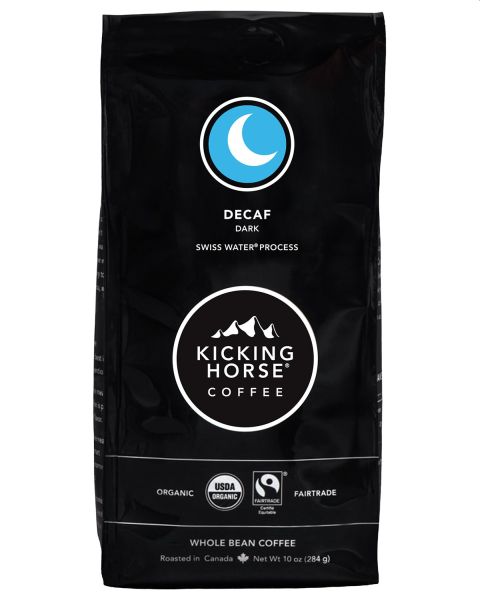
The quality beans give an excellent taste profile to this decaf coffee. You get notes of roasted hazelnuts and a long lasting finish. A deep chocolate aroma adds another dimension of satisfaction to this package. You can reasonably expect the brew to have a balanced body and mellow finish.
Kicking Horse says their dark roast works great as coffee for French press, drip machine, pour over, espresso, and cold brew. They’ve pretty much got all bases covered with these coffee beans. The beans are also one of the best organic coffee picks for those who prefer decaf.
Low on acid, decaf, and great taste. That’s a mind-blowing trinity of good coffee.
Highlights:
- Decaf
- Blend of Central and South American coffee beans
- Excellent flavor and aroma
- USDA organic and fair trade certified
- Dark roast
10. Don Pablo Signature Blend – Medium-Dark Roast
Don Pablo Signature Blend – Medium-Dark Roast uses coffee beans from Guatemala, Colombia, and Brazil. The blend succeeds in bringing the best out of its constituting coffee sources.
The careful selection of beans puts this on the same level as the best low acid coffee offerings. Most of the low acid coffees in the market are treated. That means they undergo chemical or physical processes to reduce their acid content.
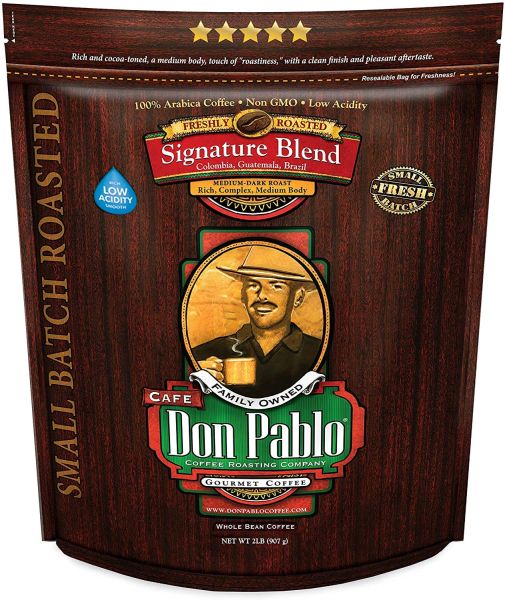
Don Pablo Signature Blend, however, is an inadvertent low acid coffee. This means the coffee doesn’t undergo any specific processes. Its low acidity is a result of a careful selection of beans, their growing environment, and their natural qualities.
In that sense, this blend is better tasting low acid coffee as compared to treated options. Most treated coffees do lose some flavor along with their acids. After all, acids and coffee flavors are tied to some extent.
Besides the natural propensity of these beans, there is also a touch of roasting. Darker roasts usually have a lower acid content. The low acid beans get easier on the stomach thanks to the medium-dark roast.
Low acidity isn’t the only thing this blend has in its favor. More importantly, the blend and roast are masterful and give this coffee a great taste. The aroma comes carrying delectable notes of cocoa. And a sip of the coffee offers a medium to full body with a smooth finish.
The roast also brings out the flavors of these coffee beans, making the brew a delight.
Highlights:
- Blend of coffee beans from Guatemala, Brazil, Colombia
- Medium-dark roast
- Low acid coffee
- Excellent flavors, aroma, and taste
- Good value for money
How Do I Buy The Best Coffee Beans? — Your Guide To Quality Coffee
What Is The Best Tasting Coffee?
The driver for our desire for the best whole bean coffee is taste. Our quest for the best tasting coffee drives us to try various coffees, beans, roasts, and other options.
The coffee plant/tree itself has several varieties. And then there are blends, add-ons, and roasts. Coffee is also affected by the region of its growth. So, the coffee beans grown in Hawaii, USA will prepare a brew different from those grown in Colombia.
While I cite different countries for the sake of example, the quality and taste of coffee can differ even in the same region.
Artisanal roasters provide several details of the coffee for this reason. You’ll often hear these terms in coffee discussions. These are things like what region the coffee was grown in, the roast type and date, whether it’s single origin or a blend, and other similar factors.
Armed with this information, you can make a fair guess of what the coffee you’re buying will taste like. So let’s continue with some talking points, facts, and jargon.
Arabica Beans vs Robusta Beans
Though the coffee plant has several varieties, the two most commonly used for consumption are robusta and arabica.
The robusta plant is hardy, tough, and can grow without much maintenance. Its coffee beans are larger (compared to arabica) and have higher caffeine content. All of this comes at the cost of flavor. Robusta beans lack the depth of flavor that arabica possesses. Moreover, coffee brewed from robusta beans tends to be on the bitter side.
Arabica plants are more tender as compared to robusta. They are, however, capable of surviving at greater altitudes. These plants produce beans with milder and pleasant flavors. You could find your arabica beans providing hints of milk chocolate, honey, cherries, and several other flavors.
Arabica’s caffeine content is lower compared to robusta, but the pleasant taste more than makes up for it.
This is a big reason why arabica is far more in demand for consumption. Better flavors and taste do credit to these coffee beans.
None of this means that robusta isn’t popular. It’s still widely used and often forms a blend with arabica beans for some amazing coffee. In some regions, like Vietnam, robusta is more popular than arabica. But that’s more an exception than a rule.
Arabica beans have several varieties and some are better than . As an example, caturra and peaberry are two famous varieties of the arabica bean.
So Should I Pick 100% Arabica Coffee?
As we know, arabica coffee is more popular with consumers and the demand is ever-growing. Many artisanal roasters, companies, and farms are content carrying arabica beans only. You’ll probably be hard-pressed to find a gourmet coffee that isn’t exclusively arabica.
Going 100% arabica is a safe choice and you’re likely to find great-tasting coffees in this category.
But that’s no reason to miss the wonders of coffee brewing!
Several popular coffees use blends with other beans (and varieties). Robusta, for example, forms eclectic and strong blends with arabica. Other varieties of coffee beans can find their way to these blends too.
And there’s no reason to insist that your coffee should be 100% arabica. Experiment a bit, explore a lot until you find your preferred brew. Forget the various varieties of coffee, even other plants like chicory find their way into the best ground coffee products.
Single-Origin Coffee And Blends
Single-origin is another term often heard with gourmet coffee. While the exact scope of the term can vary depending on the seller, there are general expectations.
It is fair to assume that single-origin coffee comes from a specific and defined region. For example, single-origin Puerto Rican coffee will come only from coffee plants in Puerto Rico. Sometimes, single-origin can get more specific and represent coffee from a single estate or farm.
So is there a benefit of single origin coffee?
For the most part, it comes down to consistency. Your single origin coffee will brew a familiar and liked taste. You can always rely on the predictability and quality of that cuppa.
It gets more important for a gourmet or famous coffee. When enjoying the flavors of Ethiopian coffee, Kona coffee, Sumatra Coffee, etc. we would prefer the taste remain unembellished.
Blends aren’t something to be dismissed either. Most coffee is generally available as blends. Some would argue that a dynamic, well-made blend could easily take on several single-origin coffees.
I wouldn’t be surprised. Notice that several items on our list of the best coffee beans are blends. Masterful blends take beans from different parts of the world to create a profile that’s often better than the individual constituents.
Even if single origin sounds more exquisite, don’t dismiss blends. Your search for the best tasting coffee beans might well end with a blend! Or do yourself one better and see if you can create a blend of your favorite coffee beans!
Coffee Acidity – What Is It?
Brewed coffee is acidic. Through the lens of chemistry, this means that coffee has a pH value less than 7. Acidity is a big part of the coffee bean. The pH value aside, acidity is largely responsible for unique flavors and taste notes in the coffee beans.
However, this acidity can be problematic for those with sensitive stomachs or acid reflux issues. In such situations, people try to alleviate the problem by switching to low acid coffee .
Nevertheless, the acidic content of coffee varies depending on growth and local conditions. Coffee grown in Guatemala and Brazil is likely to be lower in acidity. Coffee beans from Africa are known to be more acidic. Other regions have their characteristics too.
Grinding Beans For The Brew
When using coffee beans, the smart play is to grind the exact quantity needed right before brewing coffee. Use the freshly ground beans within 20 minutes. Grinding coffee beans is best done with a burr grinder.
A consistent grind at the right size yields better-tasting coffee. And that’s exactly why using a burr grinder makes sense.
Roast Dates And Their Effect On Coffee Beans
Does coffee roast date matter?
Yes, big time.
If you buy your coffee from artisanal roasters or small batch sellers, you’ll see an indication of the roasting date. They might also suggest a “best by” date.
Coffee roasters generally agree that flavor is at its prime 3-4 days after the coffee beans are roasted. The further you are from this date, the greater is the deterioration in flavor.
There is no consensus on the “best by” or “use by” date. Roasters make this suggestion through their conviction. One month is popular, though a fortnight or quarter are popular picks too.
Thing is, coffee beans can last a long time after roasting. Stored properly, coffee beans will be good to brew for months, maybe years after roasting. However, there will be a noticeable drop in brew quality and flavor.
When you want the best coffee beans, check that they are freshly roasted. And buy in quantities large enough for consumption in two months or less. Store beans in opaque and airtight containers. Prefer coffee containers that have valves to allow degassing.
Coffee Bean Terminology Explained
When reading coffee bean description or reviews, these are the terms you’ll often come across. Here’s a quick explanation for each!
High-Grown Or High Altitude Coffee
Coffee beans growing at a high altitude are more flavorful, and thus, more sought after. The relatively cool temperatures at higher altitudes slow down the maturation process of the coffee cherry. The increased time allows the bean to imbue more complex sugars, which in turn act as more exotic flavors.
Cool temperatures and lower humidity at elevation also mean that the coffee cherry gets less water. This enables a greater concentration of flavors.
Shade Grown Coffee
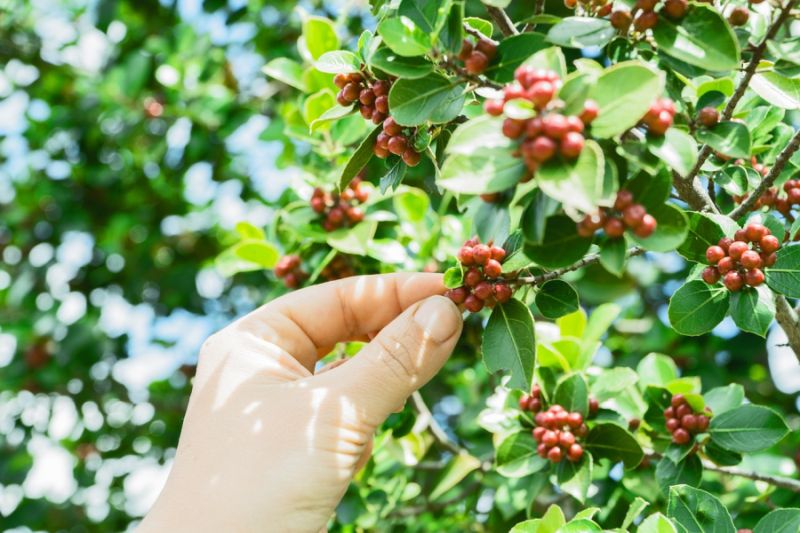
The coffee plant is tropical, but it isn’t that fond of the direct sun. It isn’t a very tall tree either. In its natural environment, the lush plant is often flanked by other, taller trees. In such a scenario, the coffee plant benefits from the shade. Proximity to these trees can also enable the bean to develop more complex flavors.
However, in our world where coffee is expensive and in high-demand, many farmers don’t want other trees to waste the space for coffee plants. So you’ll often find coffee plantations without another plant and possibly (limited) setups for shade.
Shade grown coffee, as its name implies, comes from plantations where coffee plants are interspersed with other trees. This intercropping may involve other cash crops like banana trees so farmers can get some value from the shade-giving trees.
USDA Certified Organic
Want organic coffee? The USDA Organic certification lets you know the coffee is authentic. Going organic isn’t as simple as stopping the use of pesticides and other chemicals. There are processes, checks, and requirements to fulfill before certification is awarded. Provisions for regular checks ensure that the produce stays organic.
Fair Trade Certified
Coffee industry has its problems. There have been reports of forced labor, slavery, and exploitation in several coffee-growing regions. Fair Trade Certification intends to make the coffee growing (and buying) process more transparent.
Standards upheld across the network are designed to ensure ethical practices for the farms and the consumer. The idea is for the farmers, farmworkers, and other parties involved to have a sustainable income.
Rainforest Alliance
Rainforest Alliance is another big name working to ensure an ethical and sustainable coffee supply. In 2017, more than 5.7% of the world’s coffee produce moved through farms certified by the alliance.
Prerequisites for the use of the Rainforest Alliance seal include the protection of ecosystems, wildlife, and waterways. Other necessary policies include no discrimination in the workforce, no child labor (under 15 years), protective gear for workers, etc.
What’s The Best Place To Buy Coffee Beans?
Coffee beans work best when they are freshly roasted. So the way to buy the best coffee beans goes through deciding where you can get them freshly roasted. As it is with the way businesses do marketing, the waters on “freshly roasted” can get muddy rather quickly.
Your average store bought coffee is unlikely to be freshly roasted. In fact, there’s a good chance that it has been sitting on the shelf for months. Unfortunately, that opens the door to the dubious practice of calling months old coffee freshly roasted. Because hey, technically it’s fresher than the average store bought coffee!
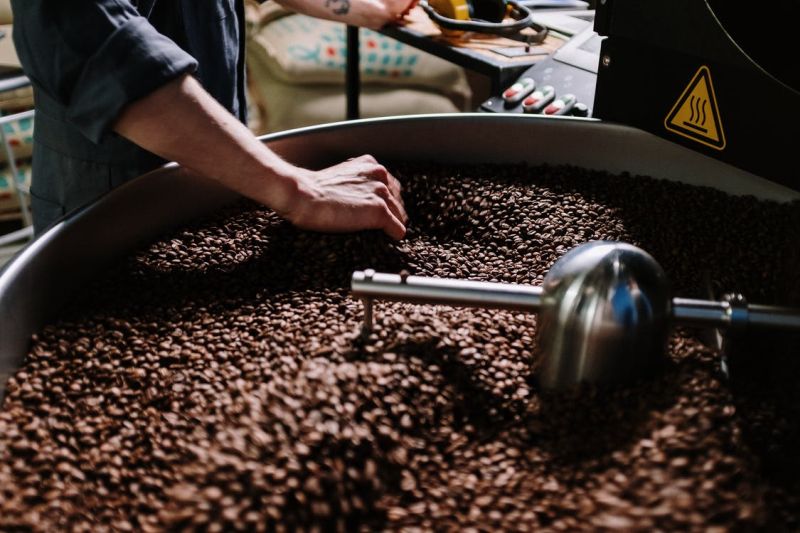
Unless there’s a clear mention of the roasting date. And it’s a brand and store you can trust, I’d say skip the stores.
For the average customer, the most common buying choices for whole bean coffee are:
- Stores
- Artisanal Roaster
- Coffee Subscription
- Online Purchase
If there is a local artisanal roaster you can trust, that’s the best place to buy the coffee beans. You’ll be supporting a local business, getting great coffee, and safely place your trust in the roast date.
A coffee subscription is great when you don’t have access to an artisanal roaster. Most coffee subscription box services will get you access to quality coffee.
Finally, there’s online shopping.
This includes buying coffee from Amazon, coffee companies, and artisanal roasters online. Online shopping gives you an excellent range of options and you get more freedom to decide on your coffee bean purchase. Please remember to read buyer reviews, see the reputation of the seller. Never buy from a shady site irrespective of the great deal or discount they may be offering.
Great Beans Start The Path To Great Coffee
Brewing great coffee is helped by putting some attention to detail. Your choice of coffee beans, grinder, and coffee maker will make a difference.
Well, it’s much easier than it sounds and you don’t have to spend an arm and a leg to enjoy a good cup of coffee. Buying the best coffee beans that suit your taste provides an excellent foundation for your cup of joe.
Our top choice for this category is Lifeboost Coffee, which displays great taste and remarkable attention to detail. While Lifeboost won over our coffee cups, the other coffee beans here are amazing picks in their own right. Take your pick – you can’t go wrong!

